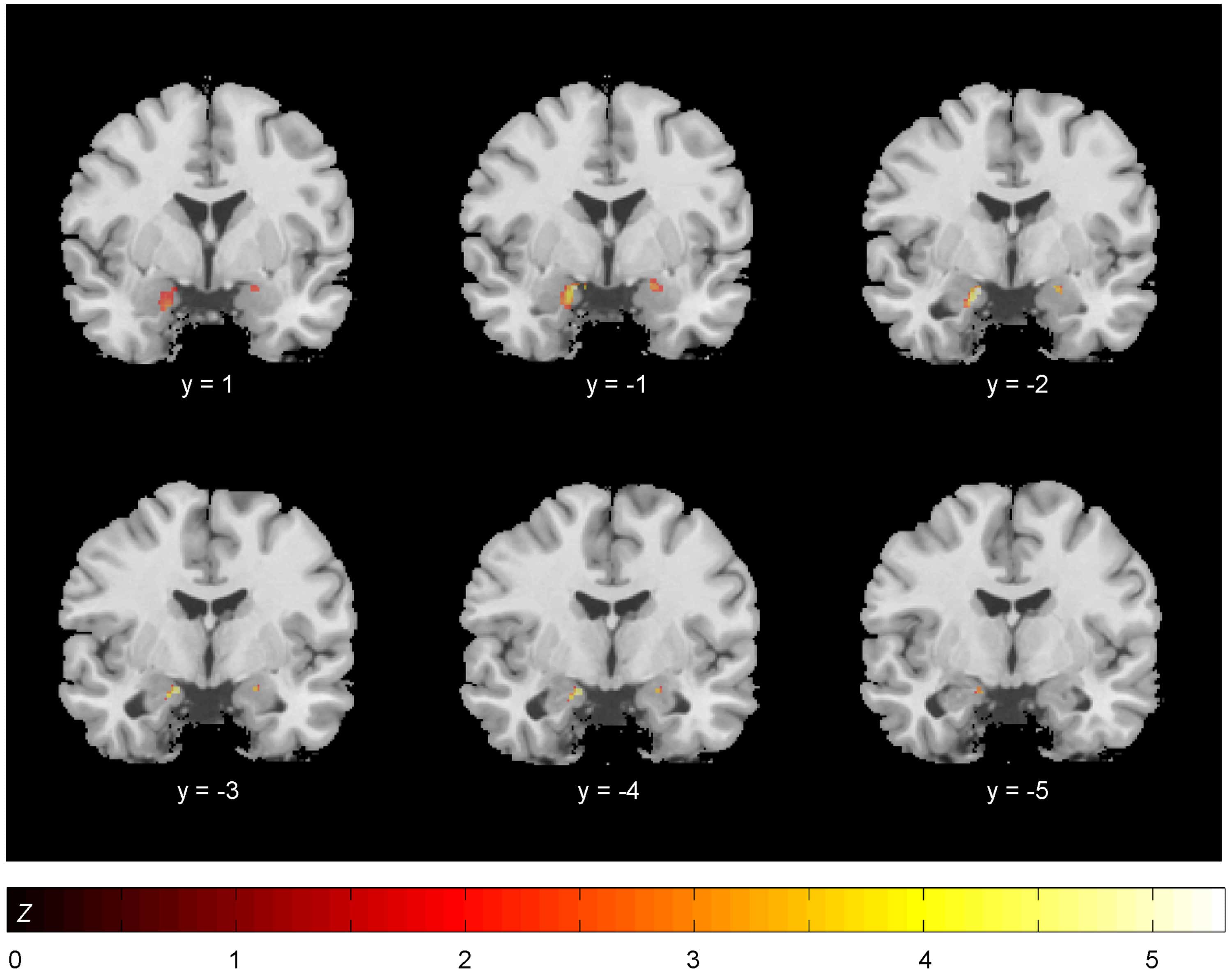Effective psychiatric treatments ameliorate excessive anxiety and induce neuroplasticity immediately after the intervention, indicating that emotional components in the human brain are rapidly adapTable Still, the interplay between structural and functional neuroplasticity is poorly understood, and studies of treatment-induced long-term neuroplasticity are rare. Functional and structural magnetic resonance imaging (using 3 T MRI) was performed in 13 subjects with social anxiety disorder on 3 occasions over 1 year. All subjects underwent 9 weeks of Internet-delivered cognitive behaviour therapy in a randomized cross-over design and independent assessors used the Clinically Global Impression-Improvement (CGI-I) scale to determine treatment response. Gray matter (GM) volume, assessed with voxel-based morphometry, and functional blood-oxygen level-dependent (BOLD) responsivity to self-referential criticism were compared between treatment responders and non-responders using 2 × 2 (group × time; pretreatment to follow-up) ANOVA. At 1-year follow-up, 7 (54%) subjects were classified as CGI-I responders. Left amygdala GM volume was more reduced in responders relative to non-responders from pretreatment to 1-year follow-up (Z = 3.67, Family-Wise Error corrected p = 0.02). In contrast to previous short-term effects, altered BOLD activations to self-referential criticism did not separate responder groups at follow-up. The structure and function of the amygdala changes immediately after effective psychological treatment of social anxiety disorder, but only reduced amygdala GM volume, and not functional activity, is associated with a clinical response 1 year after CBT.
Read the full paper:
Månsson, K. N. T., Salami, A., Carlbring, P., Boraxbekk, C. J., Andersson, G., & Furmark, T. (2017). Structural but not functional neuroplasticity one year after effective cognitive behaviour therapy for social anxiety disorder. Behavioural Brain Research, 318, 45-51. doi: 10.1016/j.bbr.2016.11.018
